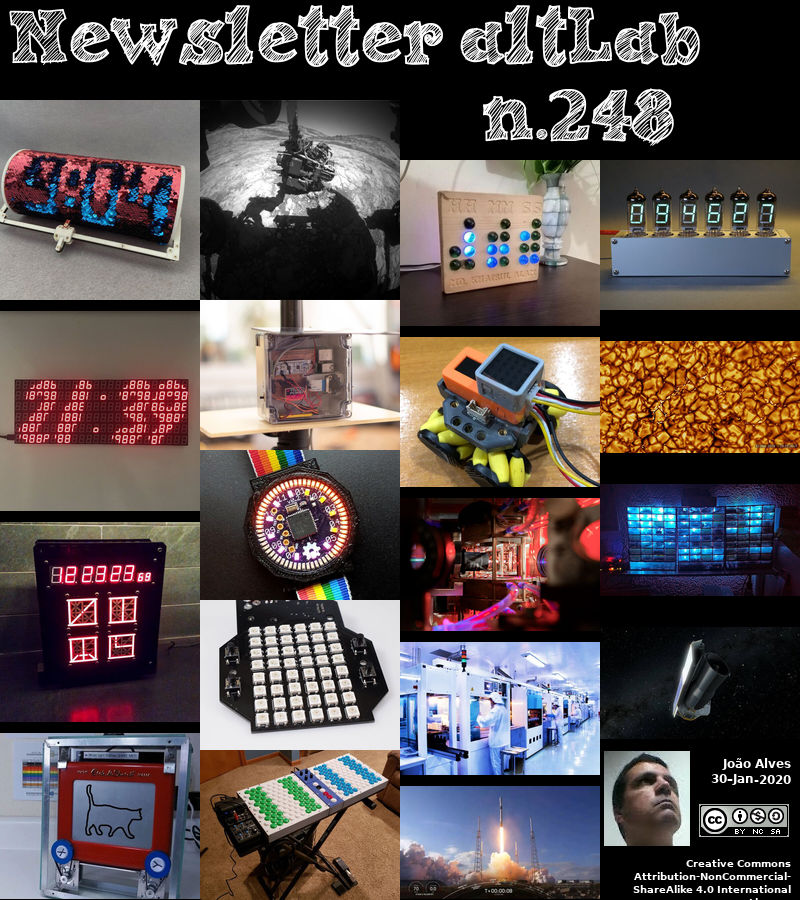2020-01-30 - Nº 248
Editorial
Esta é a Newsletter Nº 248 que se apresenta com o mesmo formato que as anteriores. Se gostar da Newsletter partilhe-a!
Todas as Newsletters encontram-se indexadas no link.
Esta Newsletter tem os seguintes tópicos:
Faz hoje anos que nascia o engenheiro electrotécnico norte-americano Douglas Engelbart. Nascido em 1925, ele foi o inventor do rato de computador. Adicionalmente ele também colaborou na invenção de outros dispositivos de "input" como o joystick, a track-ball e a light pen.
Nesta semana que passou o Kernel de Linux 5.5 foi lançado oficialmente. Com a designação de código Kleptomaniac Octopus”, esta nova versão foi lançada por Linus Torvalds de acordo com o calendário. De entre as novidades destacam-se o suporte para o Raspberry Pi 4, overclocking da GPU AMD Navi, suporte para futuras plataformas da Intel, paginação de nivel 5 por omissão, driver NVMe com nova interface, suporte de voz para o Chromebook, melhoramentos ao nível do filesystem ext4 e btrfs, etc.
Também nesta semana que passou ficámos a saber que o rover Curiosity já recuperou do problema que teve à duas semanas podendo dar continuidade às experiências cientificas que estava a fazer.
Na Newsletter desta semana apresentamos diversos projetos de maker. São apresentadas as revistas MagPi Nº90 de Fevereiro e newelectronics de 28 Janeiro 2020.
 João Alves ([email protected])
João Alves ([email protected])
O conteúdo da Newsletter encontra-se sob a licença  Creative Commons Attribution-NonCommercial-ShareAlike 4.0 International License.
Creative Commons Attribution-NonCommercial-ShareAlike 4.0 International License.
Novidades da Semana

Linux Kernel 5.5 “Kleptomaniac Octopus” Officially Launched
"Linus Torvalds has officially released Linux kernel 5.5 according to the original schedule, despite the delays that were expected due to the Christmas and New Year’s holidays. Codenamed Kleptomaniac Octopus, the new Linux release comes with a series of major improvements, including full Raspberry Pi 4 and Chromebook Wake-On-Voice support. “Despite the slight worry that the holidays might have affected the schedule, 5.5 ended up with the regular rc cadence and is out now,” Linus Torvalds announced. Furthermore, the new Linux kernel introduces AMD GPU overclocking, which is one of the most anticipated improvements especially as Linux is pushing harder in the gaming ecosystem, as well as full support for the newly-released and the upcoming Intel chipsets. Linux 5.6 on its way There are additional improvements for virtual machines running on Microsoft Hyper-V, as the platform now supports hibernating as well. And of course, the Linux kernel comes with a series of file system changes, including for XFS, exFAT, and ext4." [...]

NASA's Mars rover Curiosity had an attitude problem. (But it's fine now.)
"Curiosity has bounced back from numerous glitches during its long and accomplished mission. An attitude problem sidelined NASA's Mars rover Curiosity recently, but the robot's handlers whipped it back into shape in short order. "Partway through its last set of activities, Curiosity lost its orientation. Some knowledge of its attitude was not quite right, so it couldn't make the essential safety evaluation," Curiosity team member Dawn Sumner, a planetary geologist at the University of California, Davis, wrote in a mission update on Monday (Jan. 20). "Attitude" in this case refers to Curiosity's position in space, and the position of its various parts, such as its instrument-laden robotic arm. Losing attitude knowledge could result in some pretty bad outcomes — for example, bonking that robotic arm into something or mistakenly pointing a camera at the sun, Sumner explained." [...]
Outras Notícias
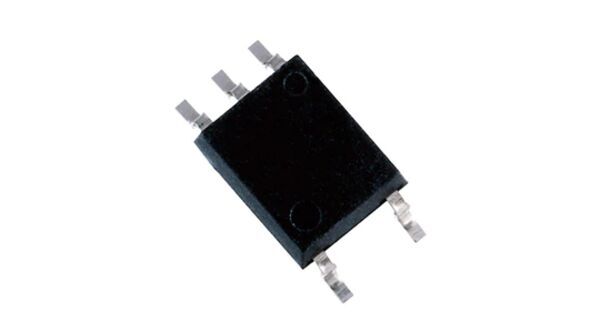
Toshiba Launches Compact High-Speed Communication Logic Output Photocoupler for Programmable Logic Controllers
"Toshiba Electronic Devices & Storage Corporation (“Toshiba”) has launched “TLP2363,” a 10Mbps high-speed communication logic output photocoupler for 24V digital input interfaces of Programmable Logic Controllers (PLCs). Shipments start today. The new photocoupler’s specifications include both the minimum and maximum values of its threshold input current at its operating temperature range (-40 to 105℃). Use of the photocoupler in combination with appropriate resistors for current control realizes a 24V digital input module that follows IEC 61131-2 Type 1[1] specifications. In addition, the new product’s circuit suppresses chattering noise so that its output is clearly either “low” or “high,” even with a slow input signal with a long (60s or less) rise or fall time. This eliminates the need for a waveform shaping circuit in the output part, reducing the number of components." [...]
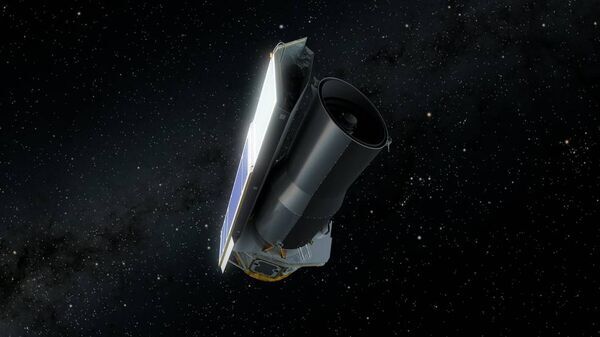
NASA's Spitzer Space Telescope Ends Mission of Astronomical Discovery
"After more than 16 years studying the universe in infrared light, revealing new wonders in our solar system, our galaxy and beyond, NASA's Spitzer Space Telescope's mission has come to an end. Mission engineers confirmed at about 2:30 p.m. PDT (5:30 p.m. EDT) Thursday the spacecraft was placed in safe mode, ceasing all science operations. After the decommissioning was confirmed, Spitzer Project Manager Joseph Hunt declared the mission had officially ended. Launched in 2003, Spitzer was one of NASA's four Great Observatories, along with the Hubble Space Telescope, the Chandra X-ray Observatory and the Compton Gamma Ray Observatory. The Great Observatories program demonstrated the power of using different wavelengths of light to create a fuller picture of the universe. "Spitzer has taught us about entirely new aspects of the cosmos and taken us many steps further in understanding how the universe works, addressing questions about our origins, and whether or not are we alone," said Thomas Zurbuchen, associate administrator of NASA's Science Mission Directorate in Washington." [...]

3D Tech Helps Keep Thieves at Bay
"As car security systems become increasingly more sophisticated, thieves are targeting car parts instead, including alloy wheels. One method to deter wheel thieves is to use locking nuts, one on each wheel, which require a special adapter, or key, to loosen. But even these are not invulnerable. Our engineers have now developed unique locking wheel nuts using 3D printing technology. Together with EOS, a leading supplier for high-end solutions in additive manufacturing, we have created locking nuts with contours based on the driver’s voice. Like an iris scan or a fingerprint, a person’s voice can be used as a unique biometric identification." [...]

Arduino 1.8.11 has been released
"We’re excited to announce that Arduino IDE 1.8.11 is here! In addition to the usual load of bugfixes and small improvements under the hood, the latest version includes: Improved support for Mac OS X (the app is now notarized and strictly follows the latest OS X recommended security guidelines) A “send text” command within the serial plotter (so you can interact with the board while plotting data!) Better sketch build time Updated AVR core and WiFi firmware As always, we must thank our amazing community for their incredible support and contributions. The complete list of changes and contributors can be found in the full changelog. " [...]

Details about MIDI 2.0™, MIDI-CI, Profiles and Property Exchange
"On Sunday, January 19, 2020 at the Annual Meeting of the MIDI Manufacturers Association, the complete suite of MIDI 2.0 specifications were adopted unanimously by the MMA members in attendance . These five core documents serve as the basis for the future expansion of MIDI. The MIDI specifications adopted at Winter NAMM included: MIDI Capability Inquiry (update) Universal MIDI Packet & MIDI 2.0 protocol Common Rules for MIDI-CI Profiles Common Rules for MIDI-CI Property Exchange MIDI 2.0 Specifications Overview The specifications are now being edited to their final format for official signing by AMEI (the Association of Music Electronics Industry, the Japanese MIDI standards organization) and then will be available for public download. Introduction to MIDI 2.0™ Back in 1983, musical instrument companies that competed fiercely against one another nonetheless banded together to create a visionary specification—MIDI 1.0, the first universal Musical Instrument Digital Interface. Nearly four decades on, it's clear that MIDI was crafted so well that it has remained viable and relevant. Its ability to join computers, music, and the arts has become an essential part of live performance, recording, smartphones, and even stage lighting." [...]
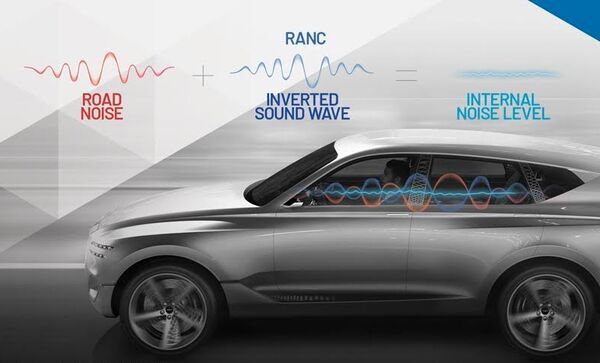
Analog Devices Collaborates with Hyundai Motor Company to Launch Industry’s First All-Digital Road Noise Cancellation System
"Analog Devices, Inc. (ADI) today announced a strategic collaboration with Hyundai Motor Company (HMC) where Hyundai plans to launch the automotive industry’s first all-digital road noise cancellation system leveraging ADI’s Automotive Audio Bus (A2B®) technology. Hyundai also intends to more broadly adopt ADI’s A2B technology for its fundamental audio connectivity and infotainment applications across its automotive fleet. “As an early A2B adopter, we realized the potential of this technology for not only our Road-noise Active Noise Control (RANC) systems but also for other vehicle applications fundamental to passenger and driver experience,” said Dr. Kang-Duck Ih, Research Fellow, Hyundai. “The low latency guaranteed by A2B enabled us to implement this groundbreaking RANC technology and accelerate its deployment to mass production.” Hyundai’s RANC system dramatically reduces noise within the cabin of a vehicle. The system can analyze various types of noise in real-time and produce inverted soundwaves. For example, there are different types of road noises that the new technology can process, such as resonant sounds created between tires and wheels or rumble sounds coming up from the road." [...]

Apex.OS 1.0 Release
"I’m thrilled to announce today that Apex.OS 1.0 is available to customers and partners starting immediately. Dejan and I founded Apex.AI in 2017 on the premise of developing technology that can launch into products within 3 years to make mobility safer and more reliable. Based on open-source ROS 2, Apex.OS is a natural choice for automotive companies interested in using modern software practices to implement autonomy. ROS is already the de facto standard for robotics, and Apex.OS extends that standard to the autonomous driving industry. In doing so, Apex.OS offers companies a head start on bringing safety to the autonomous driving software layer, the means to focus their business on their own key differentiators, and much faster time to market. Customers in North America, Europe, Japan, and Australia are already implementing their applications integrating state-of-the-art algorithms and AI using the Apex.OS software framework." [...]

SpaceX launches 60 new Starlink satellites, sticks rocket landing at sea
"SpaceX successfully launched its fourth batch of Starlink satellites into orbit and nailed a rocket landing today (Jan. 29) following days of weather delays for the mission. A sooty Falcon 9 rocket — which made its third flight with this launch — roared to life at 9:06 a.m. EST (1406 GMT), lifting off from Space Launch Complex 40 at Cape Canaveral Air Force Station here in Florida. The rocket carried 60 more Starlink satellites for SpaceX's growing constellation, the second such launch by the company this month. The satellites all successfully deployed about an hour after liftoff. Last week, strong upper level winds forced the private spaceflight company to postpone the Starlink-3 mission's launch. SpaceX then aimed for the backup launch date of Jan. 28; however, rough seas where the drone ship was waiting may have thwarted any attempt at a landing." [...]
Ciência e Tecnologia

On the way to quantum networks
"Physicists at LMU, together with colleagues at Saarland University, have successfully demonstrated the transport of an entangled state between an atom and a photon via an optic fiber over a distance of up to 20 km – thus setting a new record. ‘Entanglement’ describes a very particular type of quantum state which is not attributed to a single particle alone, but which is shared between two different particles. It irrevocably links their subsequent fates together – no matter how far apart they are – which famously led Albert Einstein to call the phenomenon as “spooky action at a distance”. Entanglement has become a cornerstone of new technologies based on effects at the quantum level and is distribution over long distances a central goal in quantum communication. Now LMU researchers led by physicist Harald Weinfurter, in collaboration with a team at the University of the Saarland in Saarbrücken, have shown that the entangled state of an atom and a photon can be transmitted via an optic fiber (like those used in telecommunications networks) over a distance of up to 20 km. The previous record was 700 meters." [...]
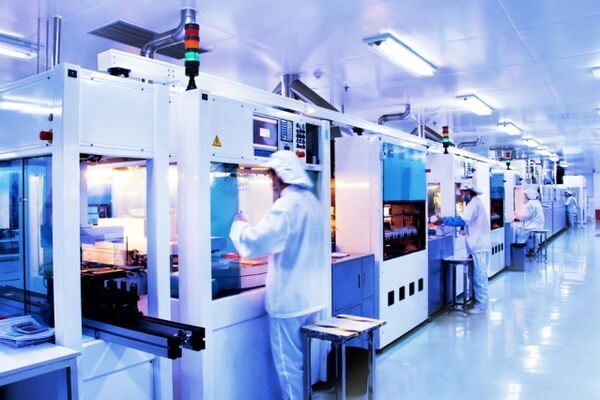
For cheaper solar cells, thinner really is better
"Solar panel costs have dropped lately, but slimming down silicon wafers could lead to even lower costs and faster industry expansion. Costs of solar panels have plummeted over the last several years, leading to rates of solar installations far greater than most analysts had expected. But with most of the potential areas for cost savings already pushed to the extreme, further cost reductions are becoming more challenging to find. Now, researchers at MIT and at the National Renewable Energy Laboratory (NREL) have outlined a pathway to slashing costs further, this time by slimming down the silicon cells themselves. Thinner silicon cells have been explored before, especially around a dozen years ago when the cost of silicon peaked because of supply shortages. But this approach suffered from some difficulties: The thin silicon wafers were too brittle and fragile, leading to unacceptable levels of losses during the manufacturing process, and they had lower efficiency." [...]

A new stretchable battery can power wearable electronics
"Electronics are showing up everywhere: on our laps, in pockets and purses and, increasingly, snuggled up against our skin or sewed into our clothing. But the adoption of wearable electronics has so far been limited by their need to derive power from bulky, rigid batteries that reduce comfort and may present safety hazards due to chemical leakage or combustion. Now Stanford researchers have developed a soft and stretchable battery that relies on a special type of plastic to store power more safely than the flammable formulations used in conventional batteries today. “Until now we haven’t had a power source that could stretch and bend the way our bodies do, so that we can design electronics that people can comfortably wear,” said chemical engineer Zhenan Bao, who teamed up with materials scientist Yi Cui to develop the device they describe in the Nov. 26 edition of Nature Communications. The use of plastics, or polymers, in batteries is not new. For some time, lithium ion batteries have used polymers as electrolytes — the energy source that transports negative ions to the battery’s positive pole." [...]

EPiQC Researchers Simulate 61-Bit Quantum Computer With Data Compression
"When trying to debug quantum hardware and software by using a quantum simulator, every quantum bit (qubit) counts. Every simulated qubit closer to physical machine sizes halves the gap in compute power between the simulation and the physical hardware. However, the memory requirement of full-state simulation grows exponentially with the number of simulated qubits, and this limits the size of simulations that can be run. Researchers at the University of Chicago and Argonne National Laboratory significantly reduced this gap by using data compression techniques to fit a 61-qubit simulation of Grover’s quantum search algorithm on a large supercomputer with 0.4 percent error. Other quantum algorithms were also simulated with substantially more qubits and quantum gates than previous efforts. Classical simulation of quantum circuits is crucial for better understanding the operations and behaviors of quantum computation." [...]
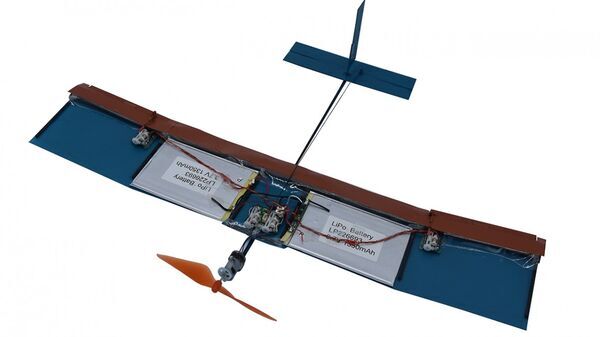
Researchers develop new bio-inspired wing design for small drones
"Taking a cue from birds and insects, Brown University researchers have come up with a new wing design for small drones that helps them fly more efficiently and makes them more robust to atmospheric turbulence. Researchers from Brown University have designed a new type of wing that could make small fixed-wing drones far more stable and efficient. The new wing replaces the smooth contour found on the leading edges of most airplane wings with a thick flat plate and a sharp leading edge. Counterintuitive as it may seem, it turns out that the design has distinct aerodynamic advantages at the scale of small drones. In a paper published in Science Robotics, the researchers show that the new wing is far more stable than standard wings in the face of sudden wind gusts and other types of turbulence, which often wreak havoc on small aircraft. The wing also provides an aerodynamically efficient flight that translates into better battery life and longer flight times." [...]
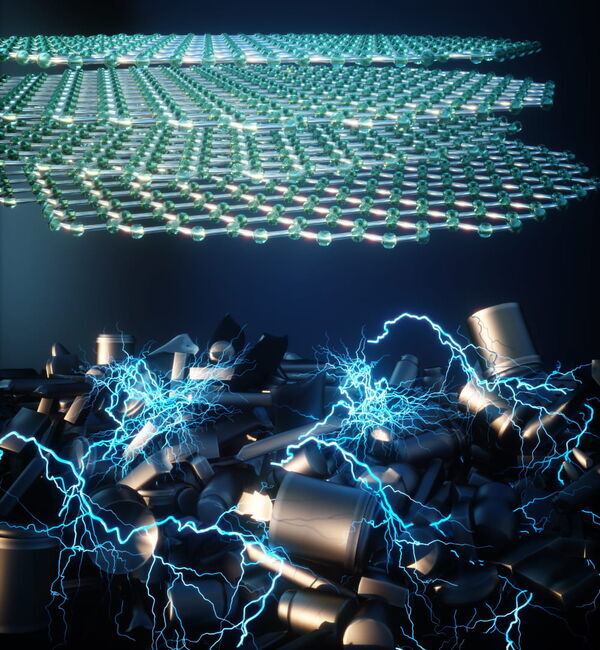
Rice lab turns trash into valuable graphene in a flash
"That banana peel, turned into graphene, can help facilitate a massive reduction of the environmental impact of concrete and other building materials. While you’re at it, toss in those plastic empties. A new process introduced by the Rice University lab of chemist James Tour can turn bulk quantities of just about any carbon source into valuable graphene flakes. The process is quick and cheap; Tour said the “flash graphene” technique can convert a ton of coal, food waste or plastic into graphene for a fraction of the cost used by other bulk graphene-producing methods. “This is a big deal,” Tour said. “The world throws out 30% to 40% of all food, because it goes bad, and plastic waste is of worldwide concern." [...]

Never-before-seen images of Sun released from world’s largest solar telescope
"Researchers and the general public are getting a glimpse of the most detailed view ever of the Sun, thanks to the National Science Foundation’s Daniel K. Inouye Solar Telescope (DKIST) on Haleakalā, Maui. The imagery, released January 29, 2020, shows cell-like structures the size of Texas roiling on the Sun’s surface and the tiny footprints of magnetism that reach into space. Scientists operating the Inouye Solar Telescope said the unprecedented detail demonstrates the sheer power of the ground-based telescope to map the magnetic fields within the Sun’s corona, where solar eruptions occur that impact life on Earth. Such activity can disrupt air travel, cause blackouts, and even disable technologies such as GPS used for navigation. “It is literally the greatest leap in humanity’s ability to study the Sun from the ground since Galileo’s time. It’s a big deal,” said Professor Jeff Kuhn of the University of Hawaiʻi at Mānoa’s Institute for Astronomy (IfA)." [...]
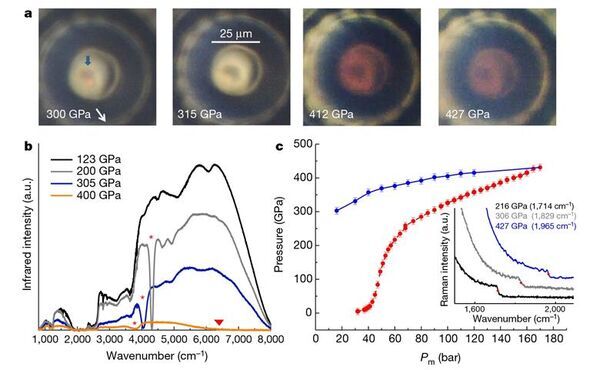
Metallic hydrogen reveals itself under mounting pressure
"High pressures have crushed hydrogen to what researchers describe as a ‘probable transition’ to its prized metallic form.1 To achieve this the scientists pushed the pressures exerted by diamond anvil cells used in these experiments up from around 400GPa to 600GPa – six million times atmospheric pressure. Paul Loubeyre and Florent Occelli from the French Atomic Energy Commission (CEA) worked with Paul Dumas from the Soleil synchrotron outside Paris, where they did high-brightness infrared spectroscopy studies. When they pressed hydrogen at phenomenal pressures between the tips of two diamonds, they saw a sharp change in absorption of infrared light as the material absorbed it all, consistent with a shift to a conductive metal. ‘It’s the first robust observation of the properties of hydrogen in this pressure range,’ Loubeyre tells Chemistry World. The scientists didn’t directly measure the sample’s conductivity, however, which is why they can’t absolutely claim to have produced the metallic form. Yet ‘the complete absorption in the infrared is a necessary condition for metallic hydrogen’, Loubeyre adds." [...]
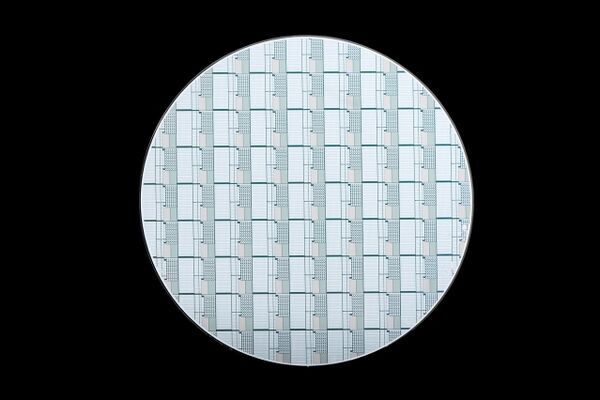
Researchers discover a new way to control infrared light
"The new method could impact devices used in imaging, machine learning, and more. In the 1950s, the field of electronics began to change when the transistor replaced vacuum tubes in computers. The change, which entailed replacing large and slow components with small and fast ones, was a catalyst for the enduring trend of miniaturization in computer design. No such revolution has yet hit the field of infrared optics, which remains reliant on bulky moving parts that preclude building small systems. However, a team of researchers at MIT Lincoln Laboratory, together with Professor Juejun Hu and graduate students from MIT's Department of Materials Science and Engineering, is devising a way to control infrared light by using phase-change materials instead of moving parts. These materials have the ability to change their optical properties when energy is added to them." [...]

Researchers create 3D-printed, sweating robot muscle
"Just when it seemed like robots couldn’t get any cooler, Cornell researchers have created a soft robot muscle that can regulate its temperature through sweating. This form of thermal management is a basic building block for enabling untethered, high-powered robots to operate for long periods of time without overheating, according to the Rob Shepherd, associate professor of mechanical and aerospace engineering, who led the project. The team’s paper, “Autonomic Perspiration in 3D Printed Hydrogel Actuators,” published Jan. 29 in Science Robotics. One of the hurdles for making enduring, adaptable and agile robots is managing the robots’ internal temperature, according to Shepherd, the paper’s senior author. If the high-torque density motors and exothermic engines that power a robot overheat, the robot will cease to operate. This is a particular issue for soft robots, which are made of synthetic materials." [...]
Documentação
A documentação é parte essencial do processo de aprendizagem e a Internet além de artigos interessantes de explorar também tem alguma documentação em formato PDF interessante de ler. Todos os links aqui apresentados são para conteúdo disponibilizado livremente pelo editor do livro.
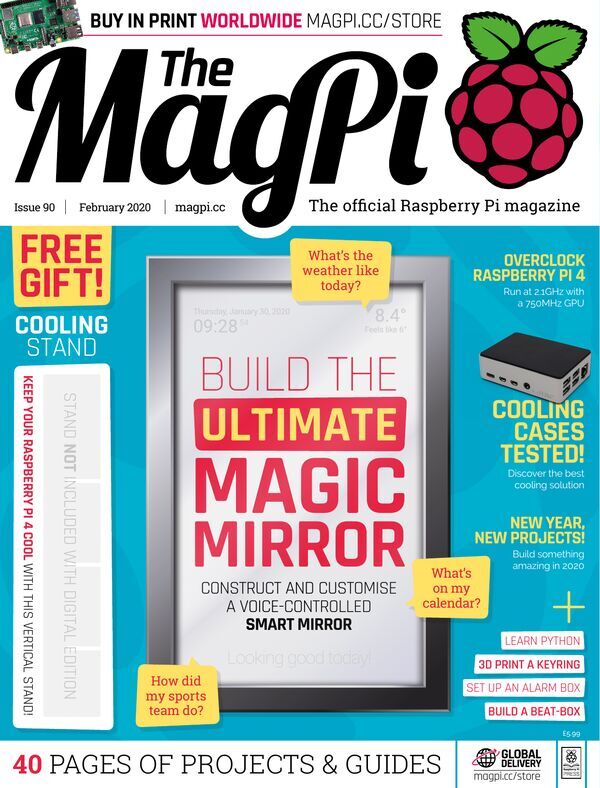
The MagPI 90
"Get your free Raspberry Pi 4 Stand with the print edition of The MagPi issue #90. Plus! How to overclock Raspberry Pi 4 and the best cooling cases tested! All this inside The MagPi magazine issue #90… -Overclock Raspberry Pi 4. Run Raspberry Pi faster with our guide to updating the config settings to boost the speed. -Cooling cases tested." [...]

newelectronics 28 Janeiro 2020
"New Electronics is a fortnightly magazine focusing on technological innovation, news and the latest developments in the electronics sector. Downloadable as a digital page turner or pdf file, or offered as a hard copy, the New Electronics magazine is available in a format to suit you. " [...]
Projetos Maker
Diversos Projetos interessantes.

Sequino
"a clock which rewrites time again and again This project is a continuation of my quest to build a robotic clock which can write and rewrite the time continuously day in and day out and keep going doing it. My first attempt with doodle clock was a failure due to the marker drying up and the second attempt with doodle#2 failed as the display got scratched very soon . This clock was inspired by my daughters t shirt with the pattern changing sequin cloth glued to it. After getting some stock fabric from a vendor i figured out the size of the clock based on the minimum resolution of the cloth . The fabric has circles of 5mm stitched 3 mm apart. Also another limit of the clock was my printer bed size of 245x170mm." [...]
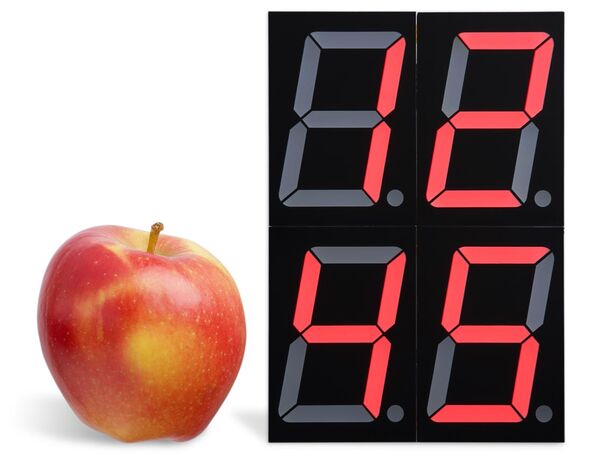
Big digit 7-segment Clock using ATtiny3216
"This is a giant digital clock, featuring four large LED displays that provide the time in a format you can read from the other side of the room You could also use it as the basis for a stopclock, for timing events such as sports and speedcubing. Introduction This clock was inspired by some 2.3" one-digit 7-segment displays I saw on AliExpress [1]. I decided it would be fun to have a clock that you can see clearly from a distance. The displays come in a variety of colours and voltages; I chose the red 4V versions so I could drive them directly from the microcontroller's I/O lines without needing driver transistors. My displays are common-cathode, but a minor change to the program would make it work with common-anode displays. The circuit is based on one of the new ATtiny chips which have a Real-Time Clock peripheral you can run from an external 32.768kHz crystal; see Getting Started with the New ATtiny Chips." [...]

Temper-ESP8266
"Temper is a compact, low power temperature sensor based on ESP8266 and SHT30 with large 13x7 pixel led display. Low power, only consumes ~30-40uA while asleep. With 400mA battery it should last months on single charge. SHT30 provides very accurate, factory calibrated measurement capability. Super simple Web config (see screenshot here) Home Assistant compatible including auto-discovery, but can be used with any other platform supporting MQTT. 13x7 pixel led display TP4054 charging IC onboard for easy charging via USB Can be attached to a wall using magnets (see thingiverse for details)." [...]
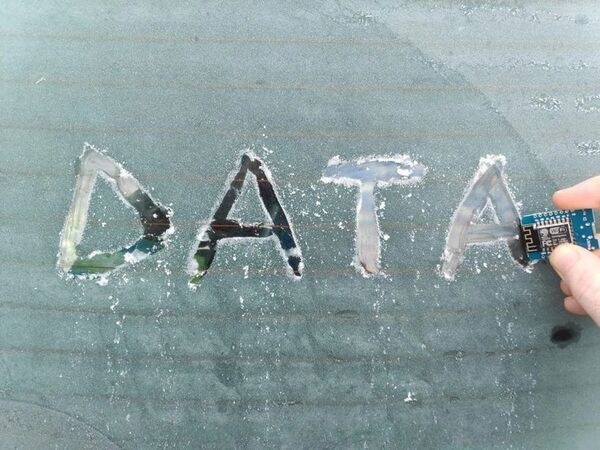
Scraping Data with an ESP8266/ESP32
"Fetch data directly on your ESP8266 or ESP32 even when there is no public API available. Have you ever wanted to get data for your Arduino projects, but there is no public API for it? Or in cases like the Instagram API where the setup process for the is not very convenient? In this tutorial we are going to look at 2 different options for scraping data from a website for your ESP8266 or ESP32 projects. " [...]
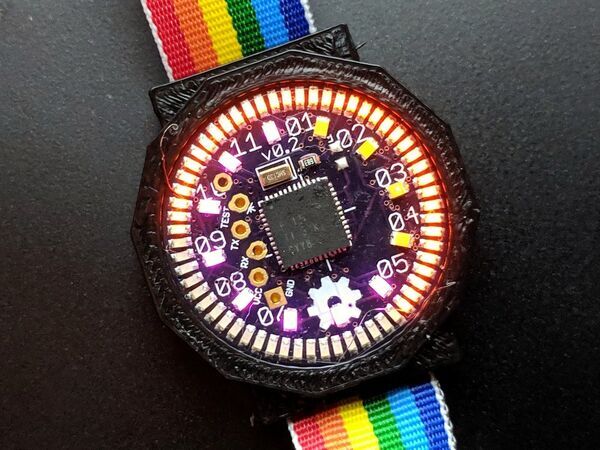
Charliewatch
""Analog" watch with 60+12 Charlieplexed LEDs. Based on Travis Goodspeed's GoodWatch21 schematic, using the CC430F5137IRGZR CPU, which doesn't have the LCD controller of the CC430F6xxx in the GoodWatch. There are also pads for a six pin EZfet cable with pogopins for programming or serial communication. " [...]
From pixel to neopixel
"Use the cursor to change the colour of neopixels. Create light experiences using visual software like photoshop or after-effects. When you want to prototype light behaviour that is beyond the blinking LED, things start to become tricky. You can of course 'hardcode' the behaviour with some for-loops, arrays or a sequence of instructions; but it is a tricky process and is hard when you want to explore; sometimes you don't really know what would look good, or would be understandable. What if you can just hover over a colour or colours, and you would see how that would look in your prototype or project. Also by moving faster, or slower, you can see how changes and colour transitions would look." [...]

7 Segment display array clock
"An digital clock made out of 144 7 segment displays It's an digital clock made out of 144 7 segment displays controlled by an arduino nano. I've build an digital clock made out of 144 7 segment displays controlled by an arduino nano. The segments are controlled by 18 MAX7219 ic's which can control up to 64 individual leds or 8 7 segment displays. The array has 144 displays made each up of 8 individual leds so the array has an total off 1008 leds you can control. (Note: when building this clock make sure the Tiny RTC’s headers are upside down so the battery faces downwards. )" [...]

IoT ISBN Verifier with Nokia 5110 Screen
"The project in a nutshell: I am fond of reading books and collecting them in my library and needed a simple way to verify whether I have a particular book when searching for an edition via ISBN and thus created this electronics project and the associated web application. To search editions easily, I created a gadget that sends the entered ISBN to the web application by using Arduino Nano 33 IoT. And, I developed a simple menu letting you choose and manage options displayed by a Nokia 5110 screen. The mentioned menu offers more features than sending ISBN: you can find more information in the following steps. Also, to maintain the database with a user-friendly interface when entering new book entries, I developed a web application in PHP, named ISBN Registration. In this application, you can create book entries identified by their ISBN, including name, page, and author information." [...]
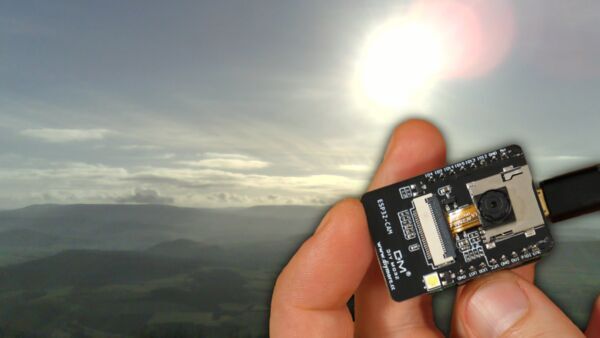
ESP32-Cam Time-Lapse
"Hardware This project is based around the ESP32-Cam. It’s widely spread and costs $6 from Aliexpress. It’s programmed using a USB to Serial converter. Since ESP32 boards need to be reset with GPIO0 to ground to be able to upload a sketch I made a simple programmer that does the resetting and programming all an it’s own. You can get the parts here (affiliate links): ESP32 Cam ~$6 Programmer $10 Firmware The Arduino sketch can be found here: https://github.com/bitluni/ESP32CamTimeLapse Before you upload set your wifi credentials in the code (SSID and password). The camera is controlled over an USB interface." [...]
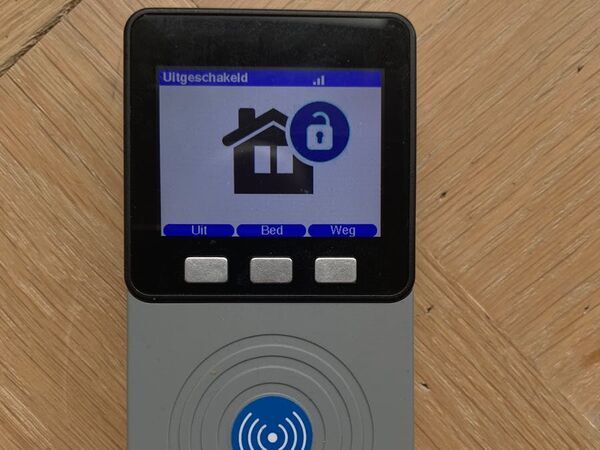
M5Stack Alarm Panel with RFID - MQTT to Home Assistant
"Hello, I created an alarm panel controlled by RFID, based on a M5Stack with RFID face. Communication is done via secure MQTT over WiFi. M5Stack-HA-Alarm-panel M5Stack alarm panel with RFID face to control Home Assistant MQTT alarm panel This M5Stack Alarm panel uses RFID to disarm the alarm and buttons to arm (away or home) the alarm system. Introduction Communication to Home Assistant is done via MQTT (TLS with authentication). The M5Stack alarm panel is build to be used in combination with the Home Assistant MQTT Alarm Panel It uses a M5Stack Core , a M5Stack baseplate and a M5Stack RFID Face Security This code uses a secured authenticated TLS connection to an MQTT server. My MQTT broker is secured using a Lets Encrypt certificate." [...]
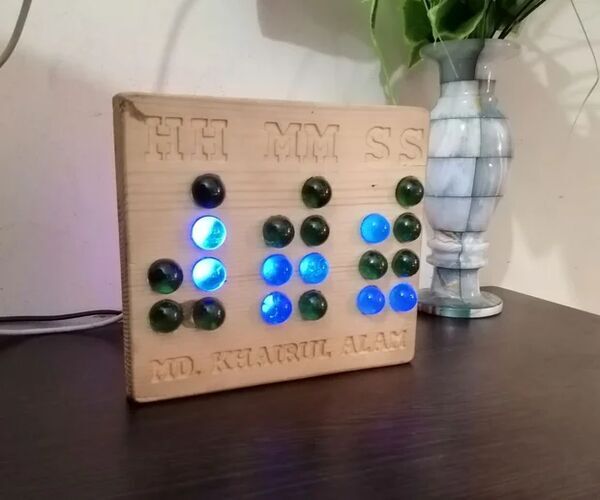
Binary Desk Clock
"Binary Clocks are awesome and exclusively for the person who knows the binary (the language of the digital devices). If you are a tech guy this weird clock is for you. So, make one by yourself and keep your time secret! You will find lots of binary clocks of different types on the Internet. Even you can buy a binary clock from online store like amazon.com. But this clock is different from all and here I used playing marble to give it an elegant look." [...]
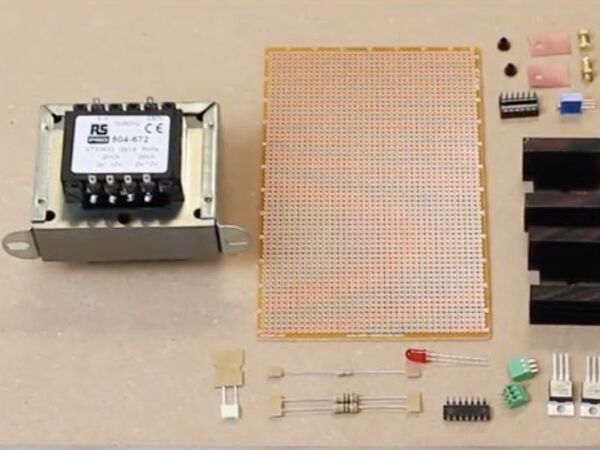
How to Build Inverter at Home?
"Here’s procedure how made an Inverter at home. Necessary Hardware Components 12 V battery Resistance 100W x2 Resistance 1.2kW x1 Resistive Trimmer100kW x1 Red LED x1 MOSFET Transistor (IRF540ZPBF) x2 IC (CD4047BEE4) x1 Transformer (12-0-12, 50VA) x1 Lamp (7.5W 220v AC) x1 Polyester Capacitor (0.1mf) x1 Why I built Inverter at home? It was night time, I was reading my course subjects for the preparation of Exam and suddenly the light went off. I called the substation and came to know that the supply of electricity will continue only after 5 days because of some serious problem in the generation unit. It would hamper my study So, I decided to make Inverter by myself which can at least provide light for studying. Then I started collecting hardware components and begin making an Inverter." [...]

Monitor temp/humidity and control LED from anywhere!!
"Attractive 'Remote control panel' with gauges to monitor data and buttons for LED control. To monitor live sensor data and control the relays over internet there are lot of projects available on internet, in which this task is achieved with the assistance of 'Broker' like MQTT. This project uses 'CavyIoT' service and is an example of ' IoT project' without complexity of programming code. Step1: Register your account at https://www.developers.cavyiot.com with your valid email id, it is free. Now login with your registered username and password. After login you have to verify your email." [...]

Raspberry Pi Bellagio Water Show
"Build your own mini Bellagio water show using a Raspberry Pi. You want to dominate the next Las-Vegas-themed parade float competition in your local town? I did!...by building a miniature version of the famed Bellagio water show to be carried on a parade float. Using a Raspberry Pi to control a bunch of solenoids timed to music while a pump pushed water from a kiddie pool through some sprinkler hosing. Control Board The control board consisted of a raspberry pi connected to 9 relays. One of the relays was used to turn on the pump, and the other 8 were used to open and close the solenoids in time to the music." [...]

PoE-Powered VFD Tube Clock
"This is a vintage VFD tube clock that uses Ethernet for both power and data. The power is provided using 802.3at PoE+ and a Molex PD Jack that contains both integrated magnetics and a PoE Type 2 PD controller. The IP stack runs on a Microchip PIC18F67J60 microcontroller that has an integrated Ethernet MAC and PHY. The IP stack includes DHCP, DNS, NTP, and LLDP functionality. The clock powers up and receives its IP address and a DNS server address via DHCP. LLDP is used to negotiate 7.5 Watts of power." [...]

How to Make a Probe
"This project will show you how to make a Probe using a Datalogging Arduino Shield, some sensors and a RTC Clock. Functionning The Datalogger is a particular mounting which can register values coming from sensors on a support ( like an SD card ). This system can be used in many projects that need a periodical measurement ( such as probes ;) ). This probe collects values from sensors and registers them into the SD card of the datalogging shield. When you plug your SD card into your computer, you will see an excel file with sensors values onto. " [...]
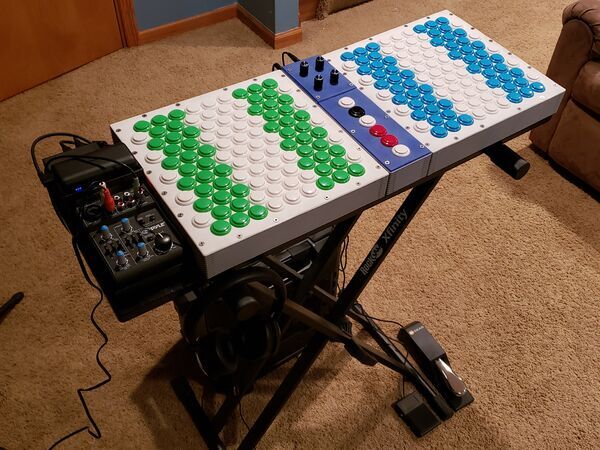
Harmonicade
"Goals of this project: Create an instrument with two button decks using a single brain, but still allow for the portability that having separate devices allows. Design a platform with interchangeable parts that can be modified or augmented without reprinting an entire case. Build in a way that allows construction without access to (or the desire to use) a large volume 3D printer for parts. To that end: The case walls, decks and panels are fastened together with wood screws rather than being printed in place. Case walls share the same width/height dimensions and could easily be swapped with 1/2" x 3" (13mm x 64mm) hobby board. Button decks and bottom panels could be constructed using flat 1/8" (3mm) wood project panels/acrylic sheets and a laser cutter/CNC machine (or some careful drill work with a step bit)." [...]

Insight Into ESP32 Sleep Modes & Their Power Consumption
"There is no question that ESP32 is a worthy competitor to many WiFi/MCU SoCs out there, often beating it on both performance and price. But, depending on which state it’s in, the ESP32 can be a relatively power-hungry device. When your IoT project is powered by a plug in the wall, you tend not to care too much about power consumption. But if you are going to power your project by batteries, every mA counts. The solution here is to cut back ESP32’s power usage by leveraging one of its Sleep Modes. It’s really a great strategy for dramatically extending the battery life of a project that doesn’t need to be active all the time." [...]
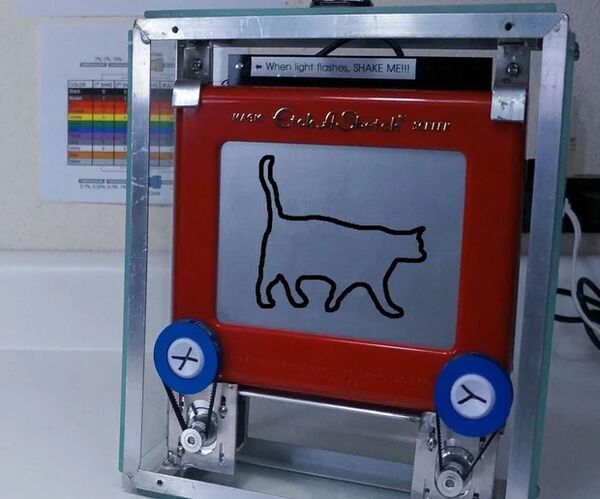
CNC Etch a Sketch (and Video Player)
"I'm not the first person to connect stepper motors to an Etch a Sketch, but I may be the first to make one wireless and safe for kids. The really fun part came when I started using it for stop motion. The first video below gives an overview of the project showing the simulated touch-screen effects towards the end. It's intended for general audiences to maximize views. Please share it with as many people as you can. The 2nd video contains all the details you makers will want to know in case you want to replicate the project or do your own unique version with similar hardware." [...]
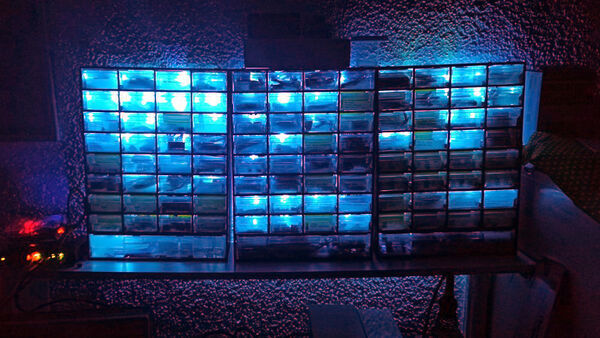
Component database (with LED indicators)
"Finally, a really stupid project! You know, I was worrying that this blog is getting too serious with all those posts about machine learning and DevOps. But now it’s time for a genuine stupid project. This time I’m going to describe why and how I’ve built my personal component database and how I’ve extended this and made some modifications to make it more friendly. For the last 20 years my collection of components, various devices and peripherals has grown too much. Dozens of various MCUs, SBCs, prototype PCBs and hundreds of components like ICs, passive devices (resistors, capacitors, e.t.c." [...]
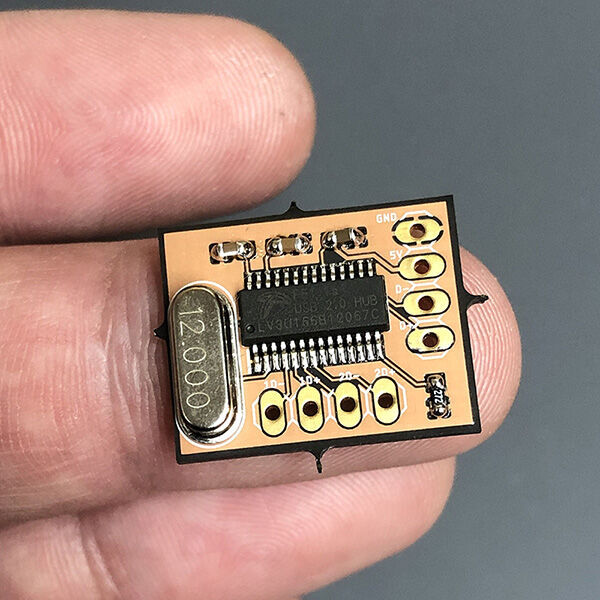
Easy DIY Tiny USB Hub For Raspberry Pi Projects
"Have you ever needed some extra USB ports when creating a project with a Raspberry Pi Zero? Were external USB hubs or HATS just not an option due to the space constraints of your project? If you answered yes to these questions, or you just want a fun soldering project that will yield you something useful, then this project is for you! I’m always trying to cram Raspberry Pis into different things for my projects, and a few of the latest things I’ve been working use a Pi Zero and just don’t have the space for a USB Hub/HAT. I’ve looked around online and there are sites that sell tiny USB hub boards like this, but they are pretty expensive. So I decided to make my own board that is fairly easy to assemble and requires only 6 cheap components." [...]
LoRa Tracker/Pager Device
"A device that combines real-time location tracking and two-way pager, over a LoRa mesh network. I have been contacted by a number of people in search and rescue (SAR) who are interested in the other Ripple LoRa mesh projects I have been working on, and it got me to thinking about making a dedicated device for the field personnel. Well, here it is! This device doesn't require a companion Android handset, as it has a very simple UI for the user. It has a small OLED screen and just 3 push buttons, so only offers limited types of interaction with the user. What it does Allows field user to set their status to one of 4 colors (Blue, Green, Orange, Red), which commander will see in real-time." [...]

Handheld Two-Player Pong with NeoPixels
"Play Pong with a friend without the need for a screen. I have created several projects that involve various flavors of the classic game, Pong. It’s quite simple, as it’s comprised of just two paddles and a ball that can be hit around a screen. But I wanted to do something different; I wanted to make a game that didn’t require a screen at all — but could instead be played on discrete NeoPixel LEDs. By doing this, a large, yet low-power display could be formed and run many varieties of games. The Components First and foremost, there must be a way to view the game while it’s being played, which is why I went with 48 LEDs laid out in an 8 by 6 grid." [...]
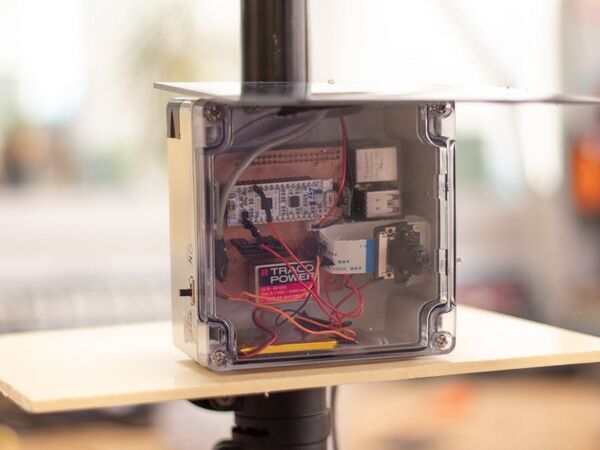
Embedded System to Detect Wildfire
"Creating a system in order to detect wildfire using deep learning programmation on a Raspberry Pi 4 and a Wisol module by Sigfox. Before explaining in details our project and its setup, we wanted to tell you that it is a student project carried out in a shot relatively short time. So we didn’t had enough time to complete our project and to do everything we wanted to. Therefore, our design is incomplete and does not directly answered our problematic. The main purpose of this article is to provide all the resources to anybody who would rebuild our project or continue it and finish it. Let’s now talk about our project!" [...]

25-Hour Digital Myst Clock/Chronometer
"Tells the time in both our "surface" system and in the "D'ni" time system used in the Myst games. Featuring custom 25-segment displays My wall clock in my house recently died, and with there being a running joke that Im a time traveller thanks to my DeLorean, I thought I might as well build a replacement clock myself so it could be extra unique. Heres what I came up with: a self-setting, self-correcting, self-adjusting wall clock/chronometer that tells time both in our timekeeping system and in the 25-hour Dni timekeeping system used in the Myst series of video games. This's actually pretty handy if you want to know if its the right time to log in for certain events in Myst Online: Uru Live. Technically its more a chronometer than a clock the main difference is that chronometers have far higher accuracy & precision, to the point that they can be used for scientific experiments. For this one, its generally safe to assume it shouldnt read outside 0.003s of the actual time, but in practice its under 0.001s" [...]
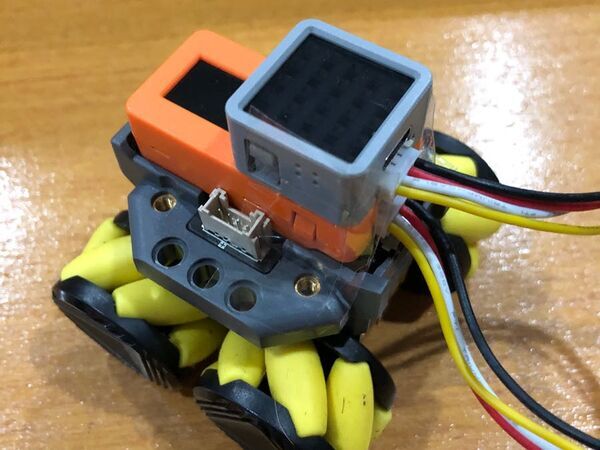
RoverC with M5Atom
"Using M5StickC on RoverC and JoyC with M5Atom attached to display direction of the RoverC. Past week, I went to Bangkok Maker Faire in Thailand. It's great opportunity to explore ideas, projects and been shopping for more stuffs for future projects. I have got the RoverC, JoyC and newest released M5Atom along with many stuffs from M5stack who hosted an exhibition booth in the faire to show their latest stuffs. " [...]
That's all Folks!



